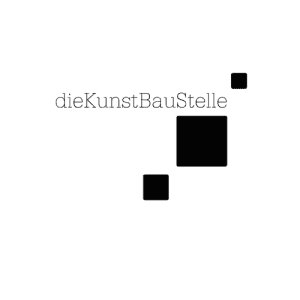November 16, 2016 marks the 250th anniversary of Dominikus Zimmermann’s death. The town of Landsberg am Lech is taking this as an opportunity to commemorate this important citizen and artist of the town throughout the year. He is considered one of the most important German rococo architects. Dominikus Zimmermann’s main work, the Wieskirche, is a UNESCO World Heritage Site.
In the Dominikus Zimmermann year, numerous events are being held on the life and work of the famous architect. The Landsberg cultural association “dieKunstBauStelle e.V.” is taking part with a very special socio-cultural project: “ARCHITECTUS LUCIS” is the name – and it says it all: under the motto “We follow the work of Dominikus Zimmermann”, children, young people and adults are invited to build a real structure together in October. The aim is to construct a room in the style of Dominikus Zimmermann’s light architecture.
The special feature here is the material. In the style of “cardboard design”, a light space will be created from cardboard boxes and architecture and lighting will be recreated and staged using appropriate cardboard techniques. The two Dutchmen Mathijs Stegink and Astrid van der Velde, international experts in cardboard design, will lead the “construction work”.
Cardboard design experts from the Netherlands visit Landsberg
The two experts recently visited Landsberg am Lech on August 3 to discuss details of the project with project initiator Wolfgang Hauck and to take a look at the town, where a major Cardboard project is soon to take place. A press event was also arranged on the occasion of their visit, during which they were available to answer questions from the local press and reported on their work and the Cardboard scene with the help of many visual examples.
It quickly became clear that cardboard design is a scene in its own right, with a large international audience and worldwide festivals. This scene has its very own philosophy: things are not built for eternity, but for the moment. The material, namely cardboard, is intended to take away the “master builder’s” fear of trying things out. He can do whatever he wants with it: model, glue, work on, join. “If something is wrong or doesn’t look good, he simply cuts the part away and takes a new piece of cardboard,” says Mathijs Stegink. “That way, he doesn’t have to be afraid of creating something and it’s easier for him to get out of his comfort zone and take a risk. In this way, he can create something great openly, courageously and creatively.”
High-quality objects made from cardboard
With relatively little financial outlay – cardboard usually doesn’t cost too much or even used cardboard parts are used – high-quality works can be created. “So high quality that you could even put a car on it in the end,” says Stegink. The two experts talk about entire forests or cities, robots, cars or even ships made from cardboard. Regular cardboard battles – e.g. car or boat races, robot fights – are held at festivals.
Important here: the final destruction of what has been built. That sounds brutal at first. “However, it is a very important part of the whole process,” says Astrid van der Velde. “Otherwise, you might be guided by something that already exists and absolutely want an object to look exactly like one that already exists.” No, you should simply keep the works of art in mind and then develop new ideas from them.
Becoming and passing away
“We think the ARCHITECTUS LUCIS concept is great, so we were immediately ready to participate,” emphasize the two, who got to know Wolfgang Hauck during a joint project in Northern Ireland. “To try out cardboard design in connection with a baroque theme, namely becoming and passing away, in such a way that everyone can take part. But we are open and are currently considering building moving objects for a parade at the end of the project.”
This makes Landsberg a very special place – also for the cardboard scene. After all, there has never been a historical architectural theme on such a scale.
ARCHITECTUS LUCIS becomes something very special through joint experimentation, creation and experience and through the opportunity to contribute and participate. You are not just a consumer, but become an architect and designer yourself. “We already have some ideas about where we want to go – but ultimately it depends entirely on the participants what comes out of it,” emphasizes Hauck. With around 40 participants expected, fun and excitement are guaranteed.
“We are very happy to have this project with us because it is not just a passive concept, but an interactive one,” emphasizes Patricia Eckstein from Kulturbüro Landsberg. “A lot of people are working together, creating something together, and everyone can be part of the project.”
The project is funded by the Bavarian Cultural Fund, the European Bavarian State Ministry of Science, Research and the Arts, the town of Landsberg am Lech and the district of Upper Bavaria.
If you are interested in participating, please send an e-mail to info@dieKunstBauStelle.de.

